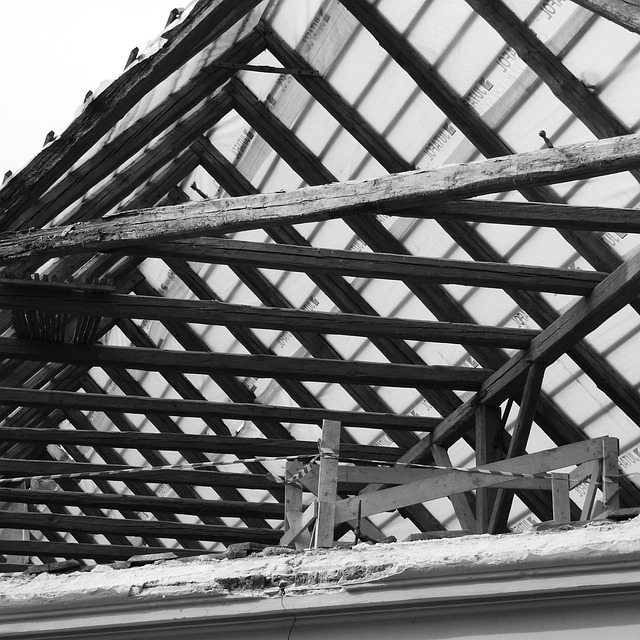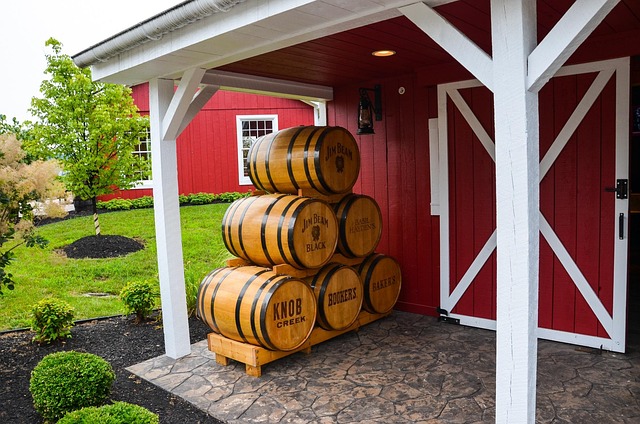Glue Laminated Beams (GLBs) and Engineered Wood Beams (EWBs) offer distinct structural benefits for modern construction. GLBs, through advanced gluing, provide superior strength and versatility, while EWBs enhance load-bearing and resistance to environmental factors by stranding or gluing smaller wood pieces. The choice between them is project-specific, considering budget and eco-friendliness. EWBs offer a cutting-edge alternative to traditional GLBs in structural engineering, with enhanced strength and durability for complex designs while appealing to sustainable builders. Advanced manufacturing techniques make GLBs a powerful solution for commercial projects demanding increased capacity and design flexibility.
Discover the future of structural integrity with advancements in glue laminated beam technology. This comprehensive guide delves into the world of engineered wood beams, exploring their advantages over traditional methods and highlighting innovative manufacturing techniques. Learn how these modern solutions enhance construction projects, offering both strength and sustainability. Compare glue laminated beams with engineered wood alternatives to stay informed about the latest trends revolutionizing the industry.
- Understanding Glue Laminated Beams: A Comprehensive Guide
- Engineered Wood Beam: Alternatives and Advantages
- Advanced Manufacturing Techniques for Stronger Beams
Understanding Glue Laminated Beams: A Comprehensive Guide

Glue Laminated Beams vs. Engineered Wood Beams: A Comprehensive Guide
When it comes to structural integrity and building design, Glue Laminated Beams (GLBs) and Engineered Wood Beams (EWBs) offer distinct advantages, each with its own set of benefits and applications. Understanding the differences between these two innovative beam types is crucial for architects, engineers, and builders aiming to enhance the structural capabilities of modern construction while prioritizing cost-effectiveness and environmental sustainability.
GLBs are created by laminating multiple layers of wood veneers with high-strength glue, forming a single, incredibly strong timber component. This process differs significantly from traditional wooden joists, as it involves advanced engineering techniques to achieve superior strength and rigidity. On the other hand, EWBs are engineered products made from stranding or gluing together smaller pieces of wood to form larger structural elements. They offer enhanced properties like increased load-bearing capacity and improved resistance to environmental factors, making them a popular choice in modern construction. A structural comparison between GLBs and EWBs reveals that both excel in strength and durability, with GLBs potentially offering advantages in terms of cost and versatility. However, the choice between them depends on specific project requirements, budget constraints, and the need for eco-friendly solutions, as EWBs contribute to sustainable building practices.
Engineered Wood Beam: Alternatives and Advantages

Engineered Wood Beams are an innovative alternative to traditional glue laminated beams, offering unique benefits in modern construction. In a glue laminated beam vs. engineered wood beam structural comparison, engineered wood stands out for its superior strength and durability. What are engineered wood beams? Benefits explained include enhanced structural integrity, enabling the handling of heavy loads without compromising quality or safety.
In terms of advantages of glue laminating for beam construction, this method creates a robust, seamless structure. Unlike traditional wooden joists, glued laminated beams differ in their manufacturing process and material composition, resulting in improved performance. The versatility of engineered wood in architectural designs is a significant advantage, allowing for complex structures with enhanced aesthetics. For eco-conscious builders, glue laminated beams: a sustainable building solution further highlights their appeal as an environmentally friendly choice compared to traditional lumber options. To learn more about these advancements, give us a call at (607) 369-9341.
Advanced Manufacturing Techniques for Stronger Beams

Advanced Manufacturing Techniques for Stronger Beams
In the realm of structural engineering, Glue Laminated Beams (GLB) have emerged as a game-changer, offering unprecedented strength and versatility compared to traditional Engineered Wood Beams (EWB). The key lies in their manufacturing process. GLBs are created by laminating multiple layers of glue-coated timber, resulting in an exceptionally strong and uniform beam. This method significantly enhances the structural integrity of wooden beams, making them capable of supporting heavier loads than conventional EWBs.
While Glue Laminated Beams vs. Engineered Wood Beam structural comparisons highlight the advantages of GLBs, such as superior strength-to-weight ratio and enhanced durability, choosing between the two depends on project-specific needs. EWBs, known for their consistent quality and easier handling, are ideal for residential construction. Conversely, GLBs, with their advanced laminating techniques, provide a sustainable building solution for commercial projects demanding increased structural capacity and design flexibility. To find out more about these innovations, visit unalam.com.
The evolution of glue laminated beam technology has brought about significant advancements in construction, offering a powerful alternative to traditional building methods. By understanding the intricacies of these beams and their manufacturing processes, from the comprehensive guide on their composition to the advanced techniques enhancing their strength, we can appreciate their potential. In comparison to Engineered Wood Beams (EWBs), glue laminated beams provide unique advantages, such as superior load-bearing capacity and aesthetic appeal, making them a game-changer in modern construction. Embracing these innovations ensures stronger, more efficient structures, paving the way for a new era in building design and sustainability.













